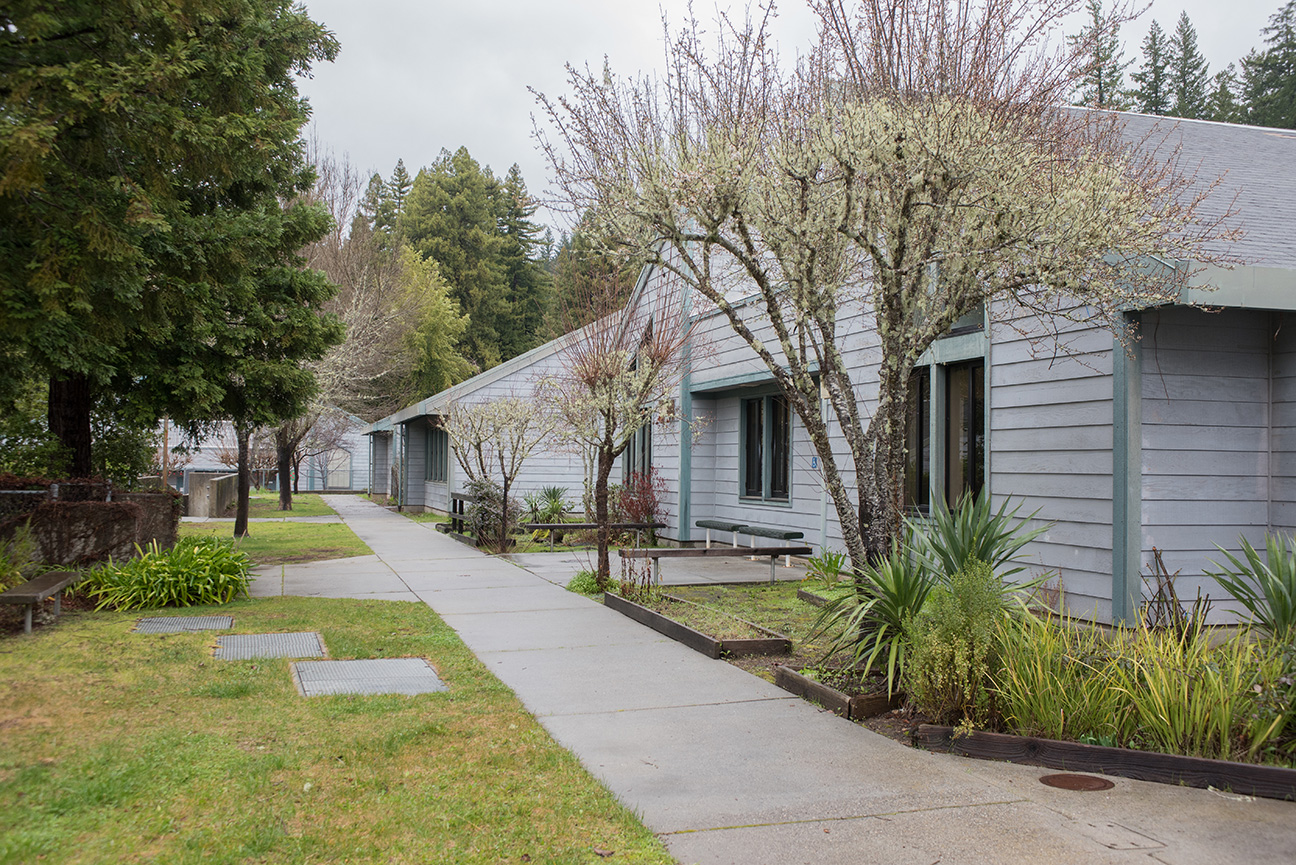By Andrea Patton
Photographs by Janjaap Dekker
An effort by the San Lorenzo Valley Unified School District might give new meaning to the term “home schooling.” District officials are considering a project that would convert one of its abandoned schools into housing for teachers.
In the meantime, the district’s superintendent, Laurie Bruton, is compiling results of a housing survey of district employees to gain more information about the district’s teacher shortage. She learned that one teacher, now in his fourth year with the district, is living in a converted garage in Scotts Valley — because it’s all he can afford.
“We found out that over 60 percent of our staff pays almost 50 percent of their income for housing, so that’s a lot,” Bruton said. “And many of our new teachers, if they can’t afford to buy a house within the first four or five years of being here, they probably will move. Over 40 percent said that, so that’s pretty high for us.”
Teachers throughout California are spending a large percentage of their earnings on housing, according to a recently published interactive map by The Sacramento Bee. The newspapers’ research shows that Santa Cruz County is one of the most unaffordable places for teachers to live. Teachers in the county would have to spend 71 percent of an average salary of $71,439 for a mortgage on a typically priced home, and 49 percent of an average salary going toward a typical two-bedroom unit.
The Bee on Sunday published its findings, with information based on figures collected from the state Department of Education and Zillow. The map indicated that teachers in Monterey County would be spending about 46 percent of their salaries for mortgage, or 40 percent for rent.
San Lorenzo Valley, in the Santa Cruz Mountains, is one of several districts across California that are exploring ways to retain or attract teachers via offering housing. The study is examining whether it would make financial sense for the district to turn Redwood Elementary School in Boulder Creek, which closed in 2003, into teacher workforce housing.

The district-owned property would qualify for a low interest loan for the building and development, and teachers and classified employees would pay below-market rent, yet to be determined, for a set period of time while they save up to buy a home.The results will be announced at the school board meeting on March 6.
The Teacher Housing Act of 2016 allows for school districts to create affordable housing on school sites for certificated and classified staff to address the state’s growing teacher shortage.
Bruton says her district isn’t the only one considering how to produce workforce housing for teachers. With the ideal site of Redwood Elementary sitting empty except for a building being used by a homeschool charter school, the San Lorenzo district is further along than other districts in Santa Cruz County in making affordable housing for teachers a reality.
Monterey Peninsula Unified School District trustee Wendy Askew is urging MPUSD to consider the excess land the district owns but does not need for educational purposes to be considered as workforce housing sites as one piece of the housing crisis puzzle.
Askew points to the white paper by Monterey Bay Economic Partnership and Envision Housing that outlines nine of the most promising policy changes that would be acceptable to the political reality of Monterey Bay Region including changing zoning rules, fees, and policies that have not risen to the level of best practices of other regions in California.
“The housing crisis affects our district. It affects our teachers, and it affects our students, so as a school board member I feel the responsibility that I need to be doing everything I can to be a part of that solution,” Askew said.
Askew, who also works as board aide to Monterey County Supervisor Jane Parker, said the study has been valuable to city council members and county supervisors in directing their attention to specific policy changes that would produce results according to the authors, Matt Huerta and Sibley Simon.

According to a 2018 study of homelessness on the Central Coast by Pivot Learning titled Crisis on the Coast, 9.9 percent of the students in Monterey County are homeless — with 936 students, or 36 percent of the student population attending Sherwood Elementary School in Salinas. Ninety percent of the homeless students in Monterey County are Latino. Santa Cruz County has a 7.5 percent homeless student population. Both figures are more than double San Francisco’s 3.4 percent.
Teachers, with a starting salary around $50,000 in both counties, fall outside the threshold of receiving subsidized housing, but for a single person paying $2,000 a month for a one-bedroom apartment, living and working in the area is becoming untenable.
“We have hired teachers, but after encouraging them to see the housing market, several teachers and professionals have withdrawn their applications because they can’t afford to live here,” Bruton said.
PK Diffenbaugh, superintendent of the Monterey Peninsula Unified School District, said his district is working on a study of four sites to determine whether the district can build housing for teachers. The district received a grant from the United Way and is working with Mid Peninsula Housing, a developer of affordable housing, and Habitat for Humanity.
“It’s certainly something that we will continue to look at because I really view it as critical for the long term success of the district,” Diffenbaugh said.
SLVUSD Trustee George Wylie supports the initiative to convert Redwood Elementary School and has been active in pushing this solution because he sees the need to draw good teachers to the area and then keep them.
“A lot of folks willingly stay here for lower pay than they would get over the hill — that’s where the big magnet is — and they choose to stay here, but that can only go so far. If someone just can’t afford to live here then we have another problem because they’re going to find another profession or another location,” Wylie said.
For Askew, who hears about the housing crisis both at the school district and the Board of Supervisor’s office, the solution relies on everyone doing their part to address the problem.
“The school district doesn’t operate (in) isolation. The school district operates within the bigger context of the different cities.The (Monterey Peninsula Unified) school district serves five cities, so we need each of those cities to be doing their part to make sure we have workforce housing available,” Askew said.
For Bruton, creating workforce housing will not only draw and keep good teachers, but it will add value to the San Lorenzo Valley community as a whole. “If it gives us a leg up or an advantage to recruit talented teachers and to retain them in our community, we think it’s a win, not only for the kids in San Lorenzo Valley, but for the whole community because it’s going to be a housing area where teachers and people who work for the school district live. They tend to be good community members involved in, not only being part of the community, but caring about what happens,” Bruton said.
“We have a serious crisis, and it’s up to everyone to be a part of the solution,” Askew said. “The solutions are complex in many ways, but it really is up to everyone to be a part of the solution.”
She says city council members have the opportunity to zone for certain types of housing or support the development of infill developments, community members can show up at city council meetings to ask which of the white paper suggestions they are pushing forward, and school board members can look at the land the district has access to, while homeowners can look at whether they can put an ADU on their site.
“There are so many ways that we can all be a part of solving the housing crisis, and whatever your role is, whatever hat you’re wearing, we all have a responsibility to make sure that we have appropriate housing stock to meet the workforce needs of our community and the aging needs of our community. For me, that is the bottom line,” Askew said.
Have something to say about this story? Send us a letter.